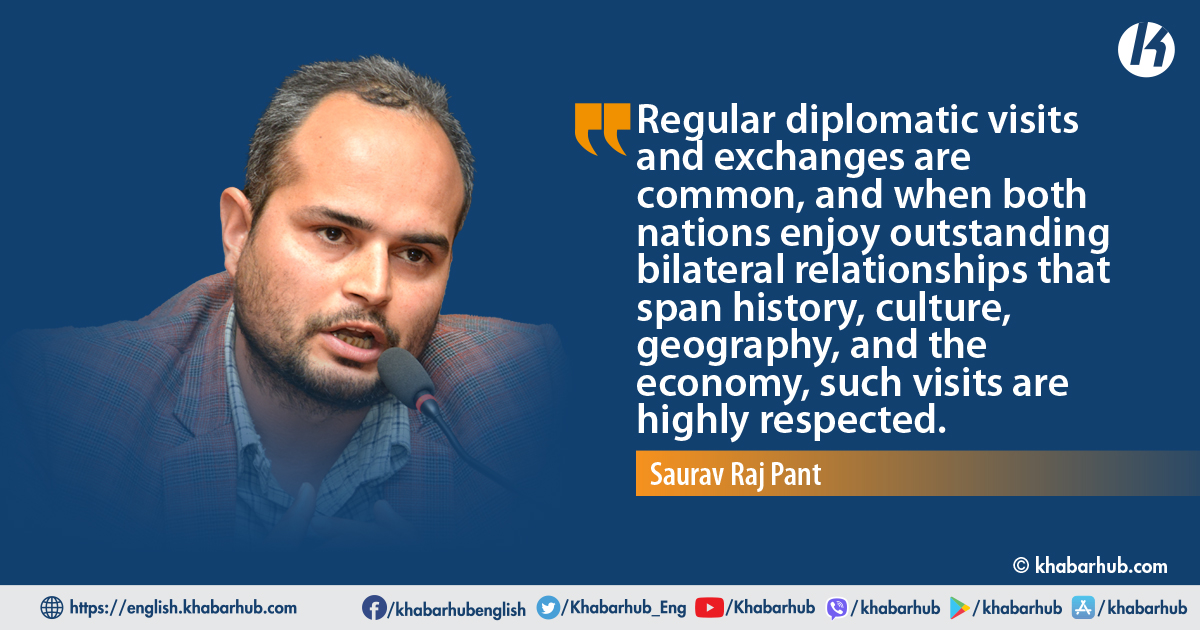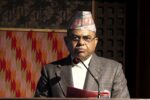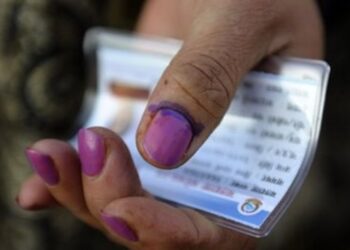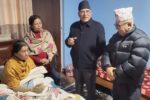Indian Foreign Secretary, Vinay Mohan Kwatra, recently concluded a two-day official visit to Nepal on February 13–14 2023, at the invitation of the Nepali Foreign Secretary and his counterpart, Bharat Raj Paudyal.
Although this was a meeting at the level of the Foreign Secretaries of the two countries, it was given greater significance due to the close ties between India and Nepal.
After the Nepali Foreign Secretary’s visit to New Delhi on September 13–14, 2022, this was a follow-up meeting.
Kwatra’s meeting with his counterpart follows the discussions with 14 Nepalese luminaries, ranging from the president to the prime minister, as well as the heads of the main opposition parties. His diplomatic style appears to be direct, quick, and extremely goal-oriented.
Issues discussed with his counterpart
According to the Ministry of Foreign Affairs of Nepal, two foreign secretaries met to discuss a wide range of topics, including but not limited to connectivity, trade and transit, cooperation in the power sector, agriculture, education, culture, the health sector, and people to people relationships.
Also, both parties discussed their pleasure with the advancement of connecting projects such as transmission lines, bridges, and ICPs.
PM Dahal wants to provide some position to the Nepali Congress in the regime while Oli, the leader of CPN UML, is opposed to it, the current ruling coalition, which includes Maoist and CPN UML and is supported by RSP & RPP against Nepali Congress, which is now the largest political party in the country’s parliament, is experiencing continuous friction.
The Nepali side also thanked India in the press statement for its assistance in providing fertilizers and for relaxing export restrictions on food grains and dialysis equipment.
The Indian side agreed to permit long-term electricity exports from Nepal (452.6 MW) to India using all exchange market items.
They also talked about the speedy approval of the four planned transmission line projects under LOC-IV and the technical upgrading of transnational transmission lines.
The Nepali sides reaffirmed their demand for air entry routes and quick approval of the Gautam Buddha International Airport, Bhairahawa’s near-border flight operation.
Above all, both parties discussed how to finish the border works in their respective portions via the established bilateral processes. This was especially important given the highly politicized issues in Nepal about the boundary lines.
The Indian Embassy in Kathmandu reports that Nepal’s government welcomed India’s offer to Nepal to take part in the G20 Finance Track this year as part of India’s G20 Presidency. The Nepali side reaffirmed their intention to ratify the International Solar Alliance as soon as possible.
Political meaning of Kwatra’s visit
According to Khabarhub and Kantipur national newspaper, during his two-day visit to Nepal, he met with 14 Nepalese dignitaries, ranging from the president of the country to the heads of Madhesh-based factions.
The future and viability of coalition politics in Nepal as well as the forthcoming presidential election were the key topics of discussion with all of these figures.
Regular diplomatic visits and exchanges are common, and when both nations enjoy outstanding bilateral relationships that span history, culture, geography, and the economy, such visits are highly respected.
Due to India’s concern over the uncertainty of the present political climate in Nepal, the precise date of Prime Minister Pushpa Kamal Dahal’s travel to India has not yet been decided.
PM Dahal wants to provide some position to the Nepali Congress in the regime while Oli, the leader of CPN UML, is opposed to it, the current ruling coalition, which includes Maoist and CPN UML and is supported by RSP & RPP against Nepali Congress, which is now the largest political party in the country’s parliament, is experiencing continuous friction.
Dahal wants to respect Nepali Congress since, despite being an opposition party, it gave him the Vote of Confidence challenging the contemporary norms and values of the Westminster Parliamentary System.
Second, Dahal has wanted to balance his relationship with both the Nepali Congress and the CPN UML to make him powerful since Oli is a genius and maybe dupe him at any time.
Coalition politics and the president’s election matters
According to previous agreements, India and the West agreed to support the Deuba-led coalition government that includes Maoists (without Oli), but this abruptly fell apart when Deuba showed little interest in giving Prachanda the position of Prime Minister.
The West believes that China established the present ruling alliance, which includes Oli. It is now extremely challenging for Nepal since both the US (the head of the West) and China (a rising great power) have conflicting global objectives that influence them to act in accordance.
The ongoing conflict between China and the West in Nepal is proving fatal for this Himalayan country.
Second, at a time when Nepal’s politics are so unstable and winning a majority by a single party seems like a pipe dream, the President has been seen serving in the crucial position for the duration of his or her full term while the Prime Minister changes in Nepal without having a lasting impact on governance.
The visit by Kwatra, the foreign secretary of India, took place at a time when American diplomats frequently travel to Nepal to strengthen bilateral ties, revive development partnerships, and, in one way or another, to indirectly initiate proxy in Nepal.
Moreover, the president of Nepal is the protector of the constitution and exercises unseen control over it as well as the three branches of the government, as evidenced by recent events involving the head of the army or legislation of the parliament’s story.
So, whatever party currently has a president who is committed to it appears to influence Nepal. Moreover, the following characteristics have increased the attention of both India and the West in the presidency.
Path ahead
Regular diplomatic visits and exchanges are common, and when both nations enjoy outstanding bilateral relationships that span history, culture, geography, and the economy, such visits are highly respected.
But a visit becomes crucial in both a diplomatic and geopolitical sense when it is made at a certain precise moment and context.
The visit by Kwatra, the foreign secretary of India, took place at a time when American diplomats frequently travel to Nepal to strengthen bilateral ties, revive development partnerships, and, in one way or another, to indirectly initiate proxy in Nepal.
The disputed territory of Nepal-India which is a great kitchen box in Nepal, especially for left-leaning politicians to run a provocation and to secure votes must be understood from the tone of India’s foreign secretary that it needs to be solved via the existing Nepal-India Boundary Working Group (BWG). The first and last channel to solve this issue is diplomacy rather than street/social media vandalism.
Above all, the numerous US and, of course, Indian visits on the eve of Nepal’s presidential election demonstrate how challenging Nepali diplomats’ current foreign policy work is. Because of the differing views of our two closest neighbors on world politics, the balancing act is always difficult.
(The views expressed in this article are those of the author and do not necessarily reflect the policy or position of Khabarhub)









Comment